Updated June 25, 2023
Before Malta is discovered as the next tourist hotspot, these 25 fabulous things to do in Malta may inspire you to add it to your travel list. I took it as a good sign that the inevitable response to my mention of Malta as my next destination was a question about its location. People had heard of it, they just weren’t sure where it was. Perhaps the time is right to start thinking about a visit.
Table of Contents
- Where is Malta?
- Why visit Malta?
- Top 6 tips on planning a trip to Malta
- 25 Fabulous things to do in Malta
- 1. Take Colour My Travel’s Free Walking Tour
- 2. Soak up the view from the Upper Barrakka Gardens
- 3. Observe the firing of the cannons
- 4. Don’t miss Saint John’s Co-cathedral
- 5. Wander the streets of Valletta
- 6. Look up and admire the architectural embellishments
- 7. Cross the harbour in a dgħajsa, a ‘Maltese gondola’
- 8. Visit the National War Museum
- 9. Check out the Blue Grotto
- 10. Enjoy Maltese bread
- 11. Enjoy a near beer
- 12. Try a Kinnie
- 13. Enjoy seafood in Marsaxlokk
- 14. Enjoy traditional Maltese food at Diar il-Bniet
- 15. Snack on pastizzi
- 16. Wander through St. Paul’s catacombs
- 17. Visit Saint Paul’s Grotto
- 18. Check out some underground bunkers
- 19. Visit the ancient capital of Mdina
- 20. Admire the magnificent Mosta Dome
- 21. Attend a church service
- 22. Take in a village festa
- 23. Take the ferry to Gozo
- 24. Enjoy an amazing seafood meal
- 25. Take a boat trip out to the Blue Lagoon
Where is Malta?
The Republic of Malta is an island nation in the eastern Mediterranean. It’s 93 kilometres (58 miles) south of Sicily, and 290 kilometres (180 miles) north of Libya and Tunisia.
Why visit Malta?
There are several reasons to include Malta on your travel list.
1. Eclectic influences
Malta’s strategic importance as a trading post and naval base has made it an attractive place to possess. Arabs, Romans, Crusaders, French, and British, among others, colonized the islands at various times. Each group left its mark on Malta’s language, architecture, customs, traditions, and food. Malta is one of those interesting places where its rich eclectic mix of architecture and culture is immediately evident.
2. Easy to get there
It’s easy to reach. The Malta International Airport (MLA) in Luqa is just outside Valletta, the capital. It’s served by international, regional, and budget airlines, including Air Malta, British Airways, Ryanair, and SWISS.
3. Cheap
It’s cheap, by western European standards. The euro goes much further in Malta compared to France and Germany. Malta is an attractive destination for budget travellers.
4. English is widely spoken
With English as the second language, it’s easy for English-speaking travellers to get around, and interact with residents.
5. Easy to get around
It’s small enough to not feel overwhelmed by distances. The three inhabited islands of the archipelago offer plenty of variety. It’s relatively easy to travel by car rental and/or public transportation. The bus service is fairly efficient. There are convenient ferry services and boat tours across, around, and between the islands. Malta, Gozo, and Comino are less than 30 minutes apart by ferry.
6. Safe
Malta has a low crime rate, although we were warned of the recent increase in pickpockets coming from Eastern Europe.
7. Pleasant weather conditions
Malta’s warm Mediterranean climate makes it a comfortable year-round destination. It boasts hot dry summers, pleasant spring weather, and cool, yet mild winters. For travellers from colder climates, Malta is a perfect destination for a European winter getaway.
8. Opportunities for water adventures
The extensive coastline of the archipelago makes it a top destination for divers and beach lovers.
Top 6 tips on planning a trip to Malta
Decisions on how you’ll get around will influence where you’ll stay and wether or not parking needs to be included. How you’ll find your way to your accommodation can be stressful when arriving in unfamiliar surroundings. These and other considerations may be helpful when planning your visit to Malta.
1. Grab a window seat on your flight
If you’re arriving or departing by plane during daylight hours, grab a window seat. My flight from Zurich helped put the geography of Malta into perspective. It offered a glimpse of the three inhabited islands of the Maltese Archipelago (Malta, Gozo, and Comino) and the two uninhabited islets of Kemmunett (Comminotto) and Filfla.
From above, the contrasting colours of the Blue Lagoon piqued my interest. The sheltered cove with a white-sand seabed and clear waters is at the western end of Comino.
2. Carefully choose where you stay
Evaluate the pros and cons of staying in select areas. Do you prefer peace and quiet? Are you looking for nightlife? Would you like to be within walking distance of a variety of restaurants? Are you relying on public transportation?
The public transportation is good, but not exceptional. Bus routes are rarely direct. They snake their way through towns and villages, making for some long rides. On the days we headed into Valletta from Bugibba, Saint Paul’s Bay, as much as two hours was spent on a bus, some of it standing.
A better choice would have been to stay in Valletta or close to it. It is a transportation hub with many top sights and experiences. Another attractive choice is Sliema with plenty of restaurants and convenient access to buses and ferries.
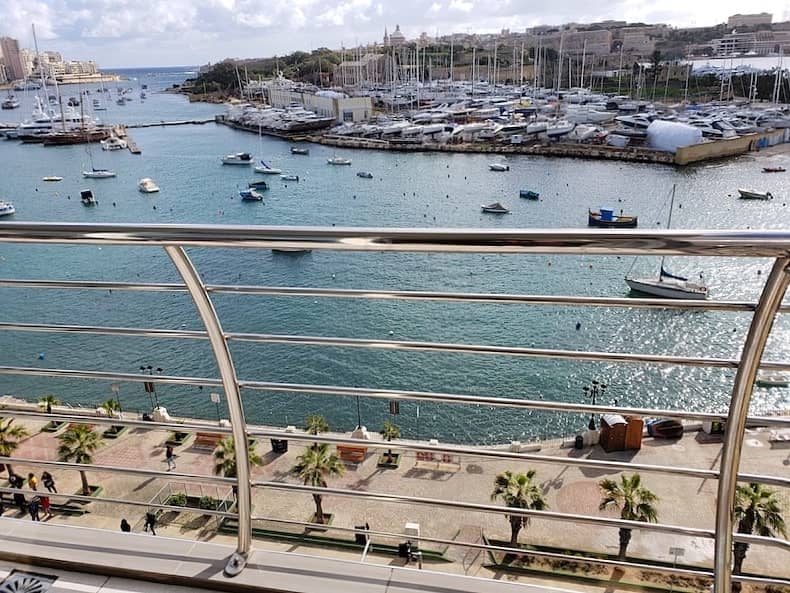 Photo courtesy of John Hansen
Photo courtesy of John Hansen
3. Get a bus pass
Bus fares during the day are €2.00, and €3.00 at night. During my two weeks spent in Malta, I bought two cards. The Explore card for a week of unlimited travel costs €21 (2023 rates). The basic Tallinga card costs €15 for 12 single day trips. An advantage of the latter card is that it can be swiped multiple times to cover several people in a group.
The ExplorePlusMeep costs €39. It covers:
- unlimited 7-day bus travel
- two ferry trips to Valletta
- two free trips on the Tallinja Bike, an electric bike-sharing platform
- a full day of travel on CitySightseeing buses, or a boat trip to Comino or harbour cruise on Captain Morgan Cruises
The main bus station is in Valetta, just outside the city gates. It’s an outdoor area with well-signposted bays, and kiosks to grab refreshments or a quick snack.
4. Take a bus or shuttle service to your accommodation
The international airport in Luqa is small enough that finding ground transportation is a breeze. Within the baggage claim area is a desk where you can book a shuttle service to your hotel. Or, get off at a hotel that’s close to your holiday apartment or private accommodation. It’s more expensive than the local bus service. But, depending on where the other passengers are going, it will inevitably be faster.
If you’re packing light and on a budget, a local bus is a viable option. Several bus shelters are in front of the terminal. Head to the shelters and look for the route map, list of hotels, and respective bus routes. It’s possible to reach your accommodation for €2.
5. Rent a car for a day or so
We didn’t rent a car. In hindsight, it would have been a good choice for a day or so to explore parts of Malta that weren’t as accessible by bus. It’s an ideal way to explore the beautiful coastline and make spur-of-the-moment decisions without having to rely on a bus schedule. The narrow roads, countless roundabouts, and driving on the left put us off. But, after experiencing similar conditions in Ireland in 2019, it would have been doable.
Choose your day(s) and routes to explore areas that are less accessible by public transportation.
6. Rent or charter a boat
With Malta’s extensive coastline, many scenic coves, inlets, and difficult-to-access beaches are best reached by boat. Besides, views from the water can surpass those experienced from land. Rent or charter a boat to take advantage of several gems that can be uncovered by spending several hours on the water.
25 Fabulous things to do in Malta
With so many interesting things to do in Malta, there’s something for everyone. Here are my top 25 things to see and do.
1. Take Colour My Travel’s Free Walking Tour
Free walking tours are a great introduction to a place. Within a few blocks in Valletta, our Colour My Travel guide used monuments and buildings to weave an interesting and informative historical overview of human habitation on Malta. And what a rich history it is!
2. Soak up the view from the Upper Barrakka Gardens
Valletta’s Grand Harbour is considered one of the world’s finest natural harbours. The beautifully landscaped gardens overlook Valletta’s Grand Harbour and the Three Cities. When we entered the gardens on a walking tour, I experienced a WOW moment. The panoramic view of the harbour was stunning.
3. Observe the firing of the cannons
Crowds gather at the edge of the Upper Barrakka Gardens to watch the Saluting Battery on the Lower Barrakka Gardens below. The firing of the cannons takes place at noon and 4:00 pm daily. Get there early for a prime viewing spot.
From the Upper Barrakka Gardens, an elevator whisks passengers down the bastions to sea level.
4. Don’t miss Saint John’s Co-cathedral
There are countless impressive churches around the globe. And then there’s Saint John’s Co-cathedral in Valletta. It’s a must-do activity in Malta. Dripping in gold and oozing opulence, the cathedral is a legacy of the Order of Saint John’s 268-year rule.
It’s a glowing example of the impact of the Knights on Maltese architecture and culture. Virtually every square centimetre of the ceiling, walls, and floor is adorned in art. Two significant Caravaggio paintings are on display. The famous Beheading of St John the Baptist is in a side chapel.
Be sure to pick up the audio guide, and allow enough time to visit. It’s not to be missed or rushed.
5. Wander the streets of Valletta
Valetta is compact and bursting with character. It’s well designed and almost impossible to get lost. After all, it was the first planned city in Europe, designed by the Knights of St. John during their reign in the 16th century. Successive occupations of invaders have left their mark, but Valetta remains uniquely Maltese. Its inescapable charm needs to be experienced on foot.
6. Look up and admire the architectural embellishments
The Maltese gallarija is an enclosed painted wooden balcony with glass windows. Gallariji inject splashes of colour into sepia-toned streetscapes. The narrow streets of Valletta provide an ideal canvas for the balconies’ range of vibrant colours.
It’s easy to spend a few pleasurable hours soaking up the architecture. Don’t forget to look up at every corner. You’ll see a rich collection of wrap-around wooden balconies, niches, and sculptures.
7. Cross the harbour in a dgħajsa, a ‘Maltese gondola’
From the Upper Barrakka Gardens, take the elevator down to sea level to Fort Lascaris. Look for the dgħajsa landing, a short walk from the base of the elevator. It costs €2 to cross the harbour to Vittoriosa (Birgu) in a dgħajsa, a traditional water taxi. The boatsman uses the two oars to leave the landing and dock the boat on the other side. An outboard motor is used to cross the harbour.
A 30-minute harbour tour of the Three Cities costs €8.
8. Visit the National War Museum
The National War Museum is located in several restored halls of Upper Fort St. Elmo in Valletta. It profiles the various invasions, occupations, and wars that have shaped Malta’s history from the Bronze Age to World War II.
Considerable emphasis is placed on several pivotal periods, including the two great sieges of 1565 and 1942. Of particular importance is the reign of the Knights of St. John from 1530 to 1798 and the Great Siege of 1565. The other significant siege was during the period of British rule in World War II when the Axis powers sought to bomb and starve Malta into submission.
Malta is the only country to have been awarded the George Cross. The award is normally reserved for individuals who have shown outstanding bravery. It recognizes the courage and resilience of the Maltese people during the siege of 1942. Today, the George Cross remains proudly displayed on the nation’s flag.
9. Check out the Blue Grotto
Not to be confused with the Blue Lagoon, the Blue Grotto is a collection of seven caves etched into the cliffs on the southern coast of Malta. It takes a short boat trip from the tiny inlet of Wied Iż-Żurrieq to experience the rich blue colours of the caves. The clear water makes the area a popular diving and snorkelling spot.
10. Enjoy Maltese bread
Oh my, Maltese bread (ħobż Malti) is addictive. The centuries-old technique of making Maltese bread begins with the mother dough. It creates a crusty loaf with local variations in many shapes and sizes. It tastes best fresh out of the oven and should be eaten on the day it’s baked. Steer clear of mass-produced supermarket imposters. Seek out the real thing in village and neighbourhood bakeries.
11. Enjoy a near beer
Local beer is usually cheaper and is easier on the environment when it’s produced nearby. Buying a ‘near beer’ supports local jobs and offers a taste of what’s produced locally. The popular Cisk lager (pronounced ‘chisk’) is readily available in eating establishments and grocery stores.
If you prefer wine, a wide selection is available in grocery stores at very reasonable prices.
12. Try a Kinnie
Malta produces a national soft drink called Kinnie (pronounced ‘keeny’). It’s worth trying, but don’t start by buying a case of the stuff. It’s definitely an acquired taste. One thing going for it is that only natural ingredients are used in the top-secret recipe. The bitter-sweet taste comes from a blend of Maltese chinotto bitter oranges and various aromatic herbs and spices such as anise, ginseng, vanilla, rhubarb, and liquorice.
13. Enjoy seafood in Marsaxlokk
Fishing boats of many sizes bob in the sheltered natural harbour of the traditional fishing village of Marsaxlokk. Most of Malta’s abundant supply of fresh seafood comes from surrounding waters.
The traditional Luzzu boat reflects a design brought by the Phoenicians around 800 BC. The bright red, blue, and yellow paint creates a colourful display.
Luzzijet are normally passed from one generation to the next. The exact colours of the boats are retained beyond the five-year cycles when boats are stripped and repainted. This practice, along with the pair of painted eyes, is rooted in superstition.
Luzzijet are adorned with the Eyes of Osiris, carved or painted on both sides of their prows. They’re viewed as a symbol of protection from harm while out at sea.
Enjoy a seafood lunch at one of the many restaurants lining the harbour. But, don’t do as we did and order deep-fried seafood. What were we thinking???
14. Enjoy traditional Maltese food at Diar il-Bniet
Diar il-Bniet is a family-run farm-to-table restaurant in the village of Had Dingli. Its menu features traditional Maltese food with lots of vegetarian options. A meal at Diar il-Bniet works well with a visit to the Dingli Cliffs.
It’s accessible by bus. Take the 52, 56, or 201 bus on the Ħad-Dingli route to the Kbira stop. Or, save it for a touring day by rental car.
15. Snack on pastizzi
The most popular place in Malta for pastizzi is the famous Is-Serkin pastizzeria. It’s also known as Crystal Palace. The queue is likely to stretch out the door but it’ll be worth the wait.
The popular Maltese snack pastizzi is a small, flaky pastry puff filled with mushy peas or ricotta cheese. It’s best eaten fresh out of the oven. Served with coffee or tea in a glass (with tinned milk), it’s definitely a thing to do in Malta.
Is-Serkin is at 84 Triq San-Pawl, Rabat. It’s across from the Roman Domus, and a couple of hundred metres from the entrance to Mdina.
16. Wander through St. Paul’s catacombs
St. Paul’s catacombs are the largest late-Roman underground cemetery in Malta. The extensive burial site consists of a maze of hallways and chambers. It dates from the fourth to the ninth centuries AD.
They’re in Rabat, on the outskirts of Mdina, as Roman law prohibited burials within the city.
17. Visit Saint Paul’s Grotto
Saint Paul’s Grotto is beneath St Paul’s Church in Rabat. This is where Paul found shelter after his ship foundered on the northern coast around AD 59. It’s believed Saint Paul preached here and baptized the country’s first converts to Christianity. It’s a revered place that attracts hordes of visitors, including Popes Benedict and John Paul.
18. Check out some underground bunkers
Below the Roman catacombs near Saint Paul’s Grotto is a complex of World War II shelters with two main corridors and about fifty rooms. Families tried to make their rooms more comfortable by painting the walls or tiling the floor.
19. Visit the ancient capital of Mdina
Mdina is one of Europe’s finest examples of an ancient walled city. It’s perched on top of one of the highest points of Malta, with commanding views of the surrounding landscape and sea. Also known as the Silent City, Mdina dates back 4,000 years. It’s a perfect place to explore the narrow streets and alleys with no particular plan in mind. You’ll inevitably end up at a section of the thick city walls. Drop in to the famous Fontanella Tea Garden for a delicious pastry while enjoying the superb view.
Mdina and Rabat are well served by bus routes 53, 186, and 202.
20. Admire the magnificent Mosta Dome
Never have I seen so many churches in such a small area. With 359 churches, Malta has a church density of slightly more than one church per square kilometre. Occupying a prominent place on the list is the Basilica of the Assumption of Our Lady, commonly known as the Rotunda of Mosta or the Mosta Dome. The unsupported dome is considered the third-largest in the world.
Like so many Maltese churches, the interior is magnificent.
Malta was heavily bombed during World War II. The Mosta Dome, and close to 300 parishioners, narrowly escaped destruction when a German bomb fell through the roof but failed to explode. It was interpreted as a miraculous intervention. Another interpretation is that it was an act of sabotage by Czech workers who manufactured bombs for the Nazis. In any case, the bomb was defused and dumped in the sea. A replica is on display in the sacristy.
21. Attend a church service
Religion is deeply embedded in Maltese life and attending a church service is one more opportunity to be exposed to this aspect of local culture.
Scattered throughout the archipelago are tiny churches strategically located to serve the needs of farmers, fishermen, and other working people. The one nearest to where we were staying was St. Paul’s Shipwreck Church overlooking St. Paul’s Bay. We arrived early for Mass as even with chairs set up around the altar, it barely accommodated 100 people. We had a choice of Mass in English or Maltese, and chose the latter. It was wonderful to listen to the language, a unique mix of Arabic and Italian. Malti is the only Semitic language written in the Latin script, so we had the added advantage of being able to follow the written versions of the hymns on a screen.
22. Take in a village festa
Village festas are a significant Maltese tradition. Every village has its own patron saint and its own festa. Festa season extends from May to September. There’s hardly a weekend where one village or another isn’t celebrating the feast of its patron saint. Some hold more than one festa to celebrate the feast of another revered saint. A festa typically lasts three days. Band music, food stands, fireworks, and slim strands of paper confetti add to the festivities.
I was fortunate to be invited to join Christina Gatt and her husband Dennis for the festa in Rabat. The procession, lasting over three hours, carried the statue of Saint Joseph through the streets of Rabat. The pride of the community and centre of the festivities was the Church of Saint Mary of Jesus, handsomely decorated for the occasion.
23. Take the ferry to Gozo
Gozo is only 14 kilometres long and 7.25 kilometres wide. It has a more rural flavour than Malta, with rolling hills and cultivated farmlands. There are bus connections to and from the ferry terminals of Ċirkewwa on Malta and Mġarr on Gozo. Ferries leave every 45 minutes, and the crossing takes about 30 minutes at a cost of €4.65 return or €4.05 at night (2023 rates).
Once on Gozo, there are various options for exploring the island. A hop-on-hop-off bus leaves the Mġarr Terminus every 45 minutes starting at 09:50 daily. There are car rental agencies in Mġarr. Or, negotiate a rate with one of the many taxi drivers who greet passengers coming off the ferry.
24. Enjoy an amazing seafood meal
If you enjoy seafood, I have a recommendation: Ristorante Arzella in the northern resort town of Marsalforn on Gozo. It was my favourite meal during my stay in Malta. Follow the link to a detailed description.
25. Take a boat trip out to the Blue Lagoon
The Blue Lagoon is in a shallow bay on the western end of Comino. The crystal clear waters make it a favourite swimming, snorkelling, and diving spot. It’s popular with day-trippers. If you have an aversion to crowds, it can be very busy on weekends, and every day in July and August. The azure colour of the water is so prominent that it’s clearly visible from the air (as you can see in the photograph at the beginning of the post). The photograph below is from Gozo. It can be reached by boat from various spots including Sliema, St. Paul’s Bay, Ċirkewwa, and Mġarr.
Might you be interested in my other posts on Malta?
If you found this post helpful, please share it by selecting one or more social media buttons. This list of 25 fabulous things to do in Malta barely scratches the surface of both popular and unique things to do. If you have others to add, please do so in the comments. Thank you.
Pin for later?

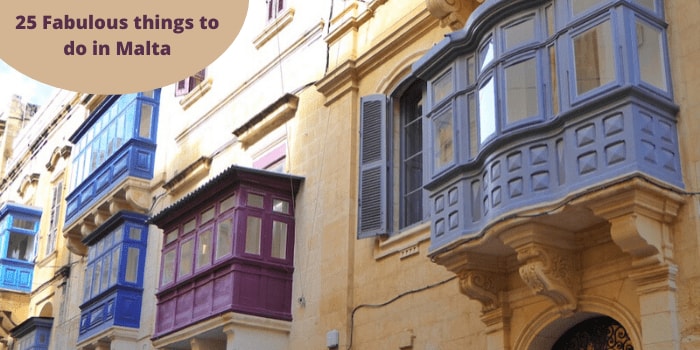
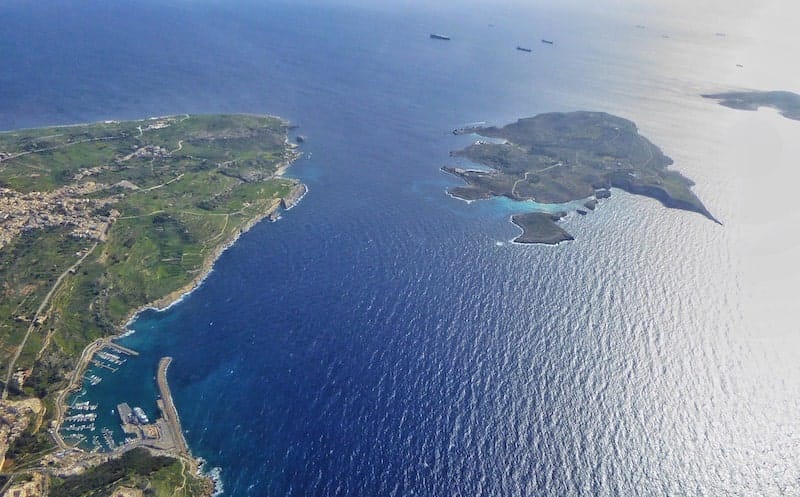
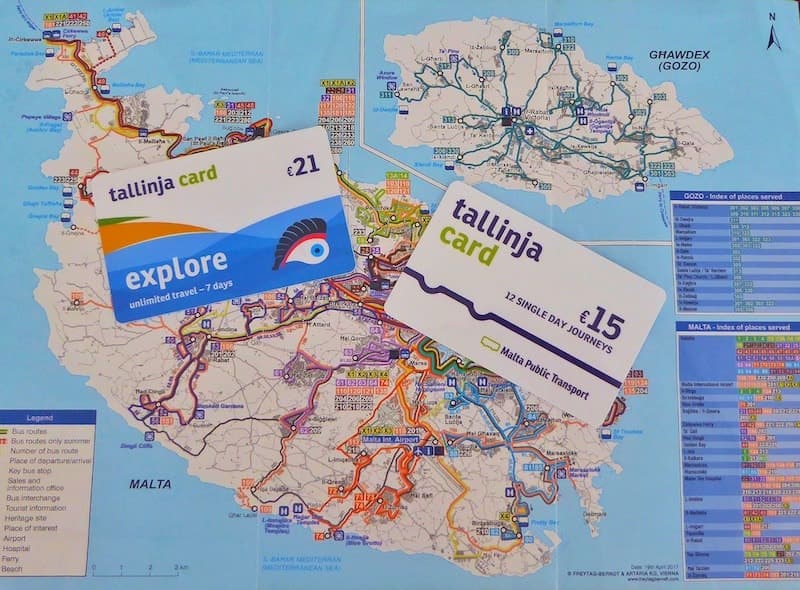
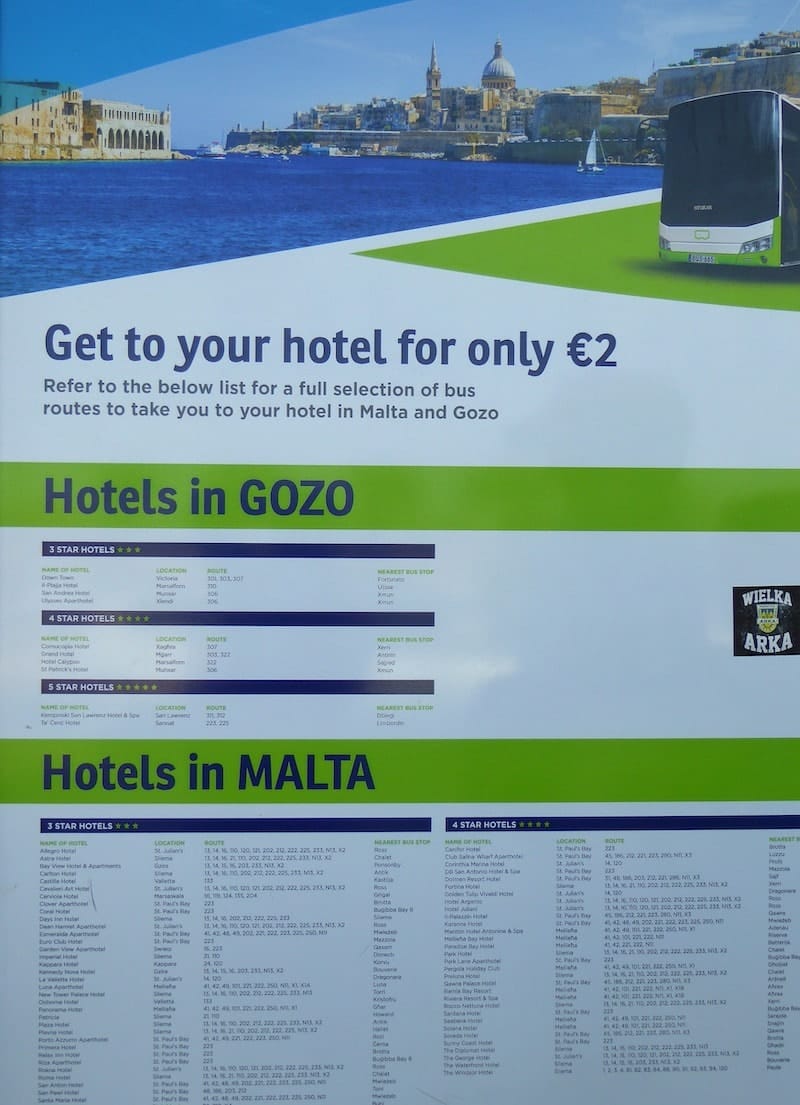
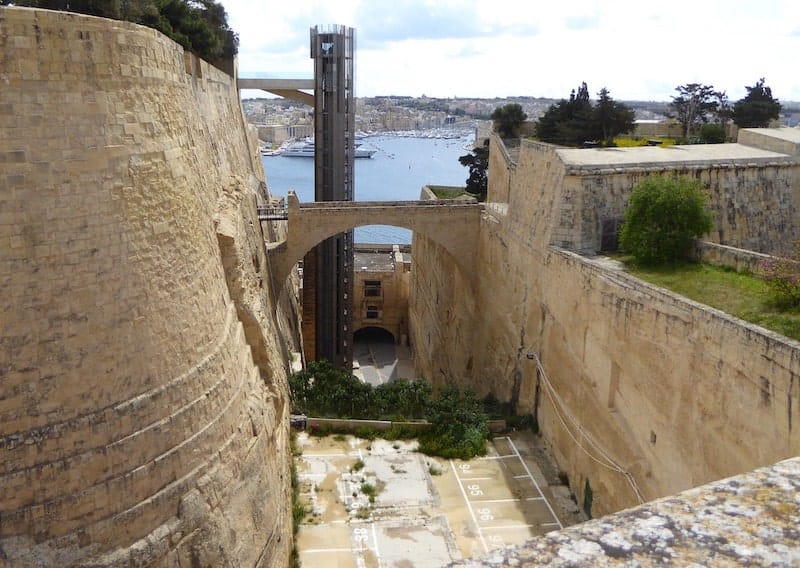
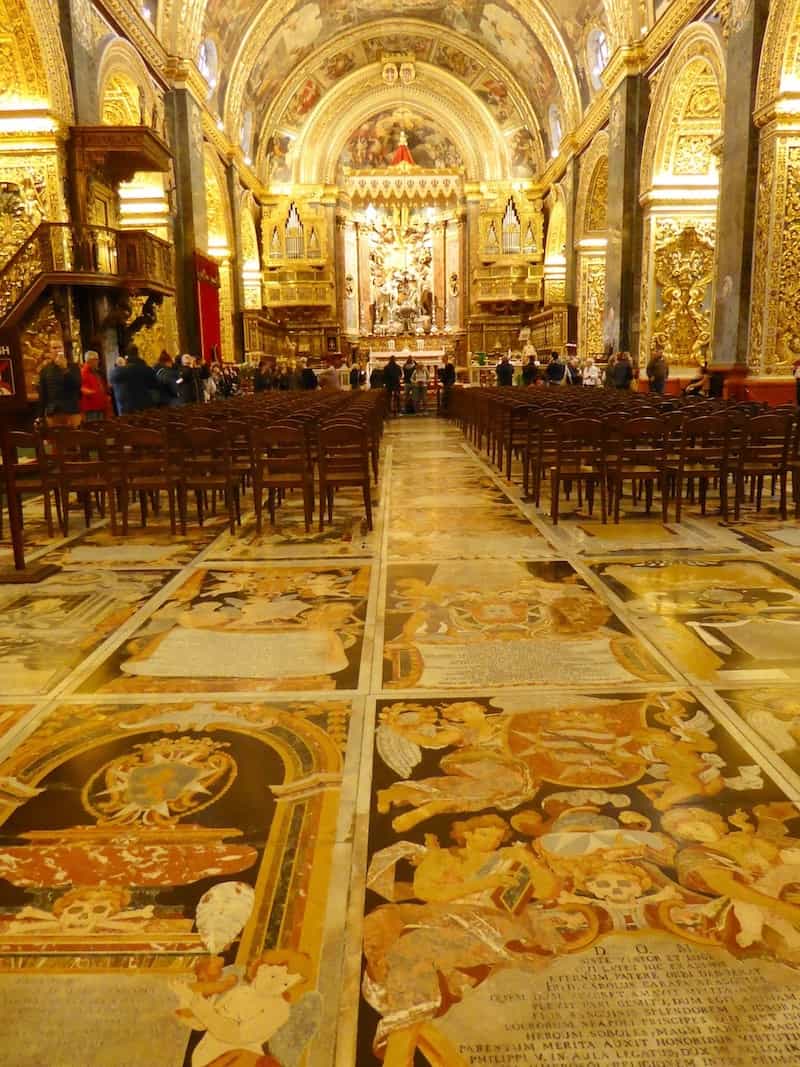
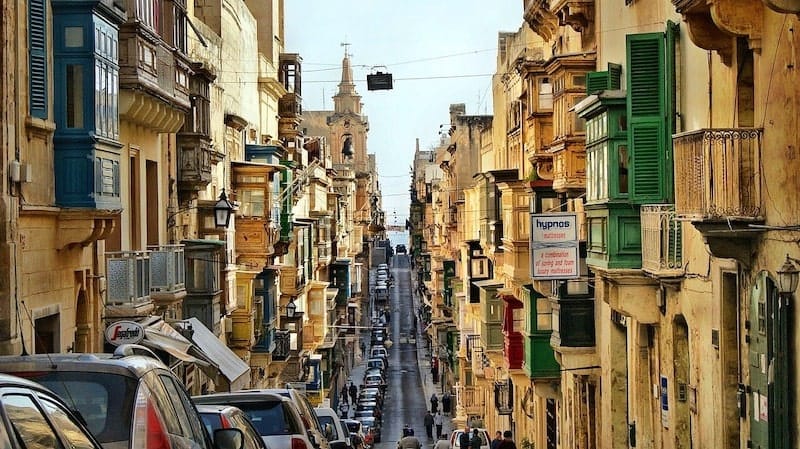
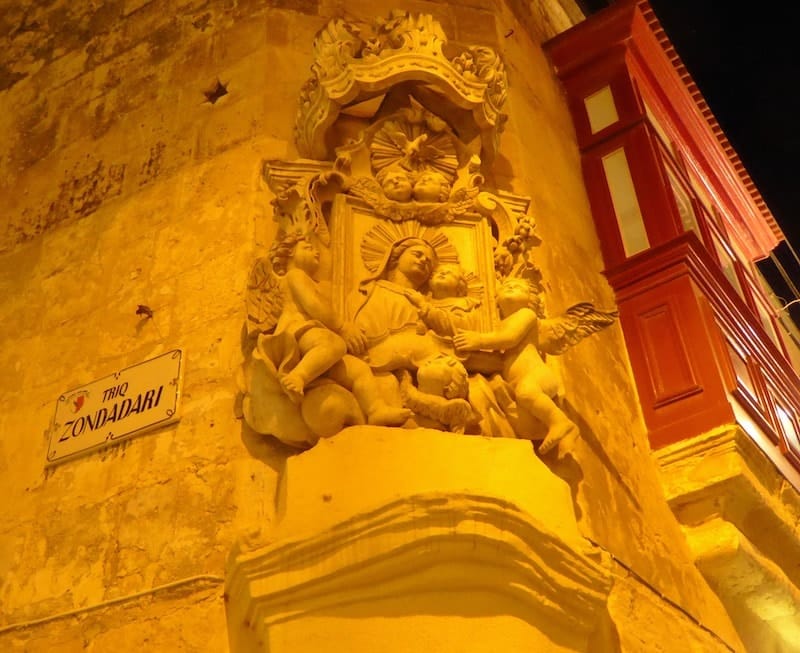
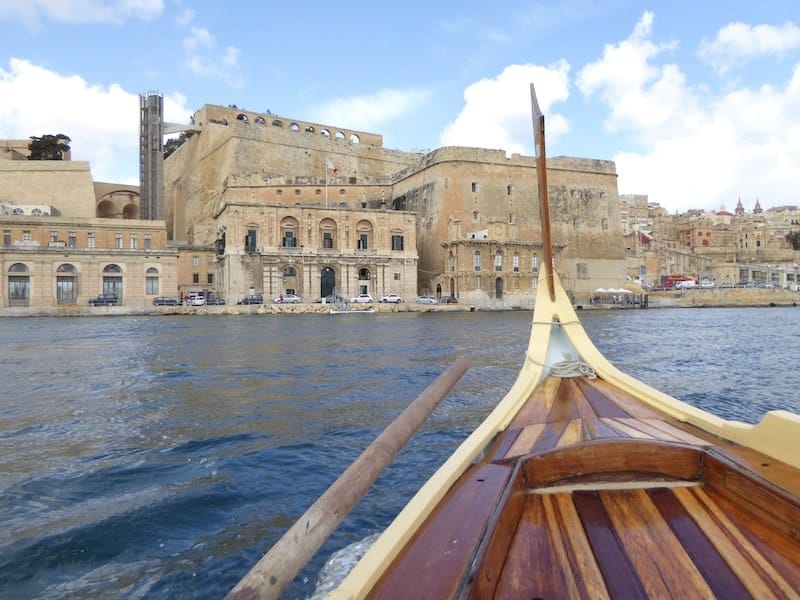
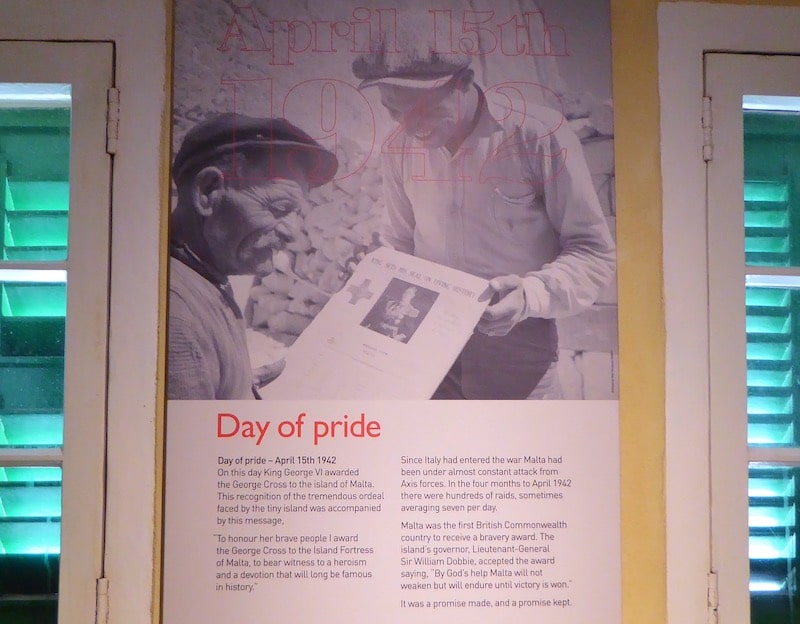

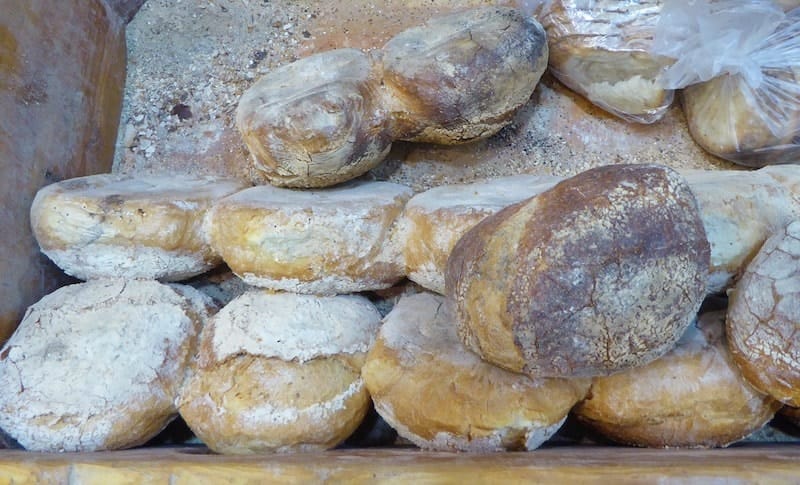
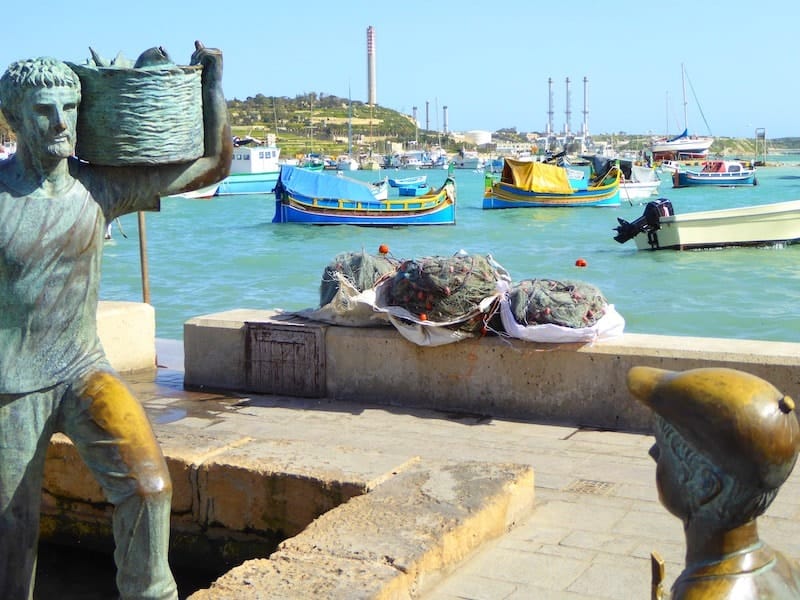
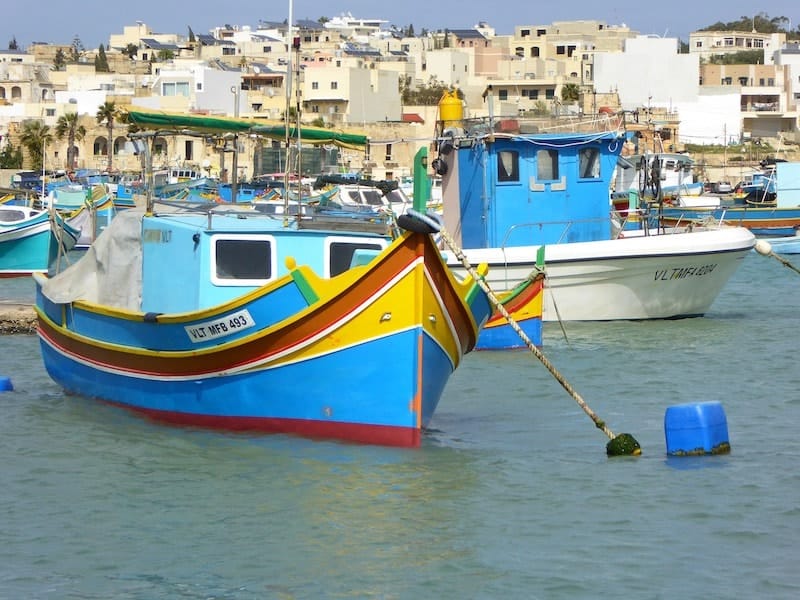
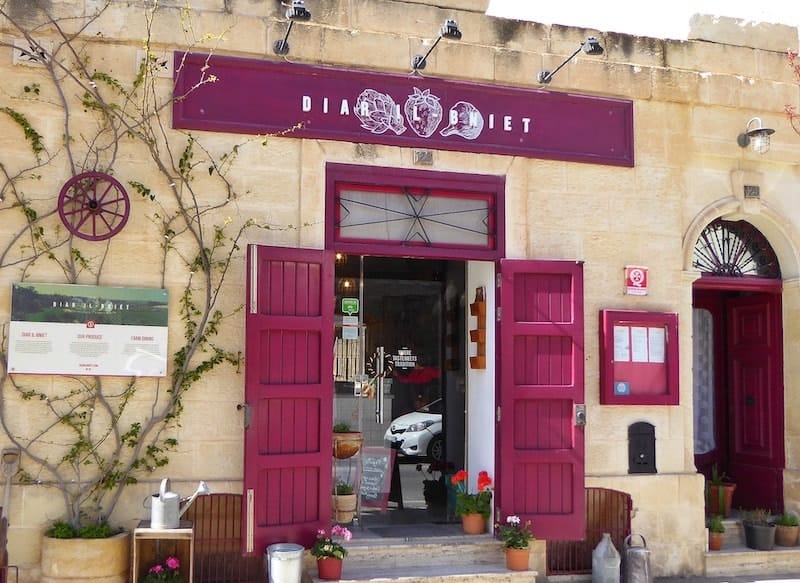

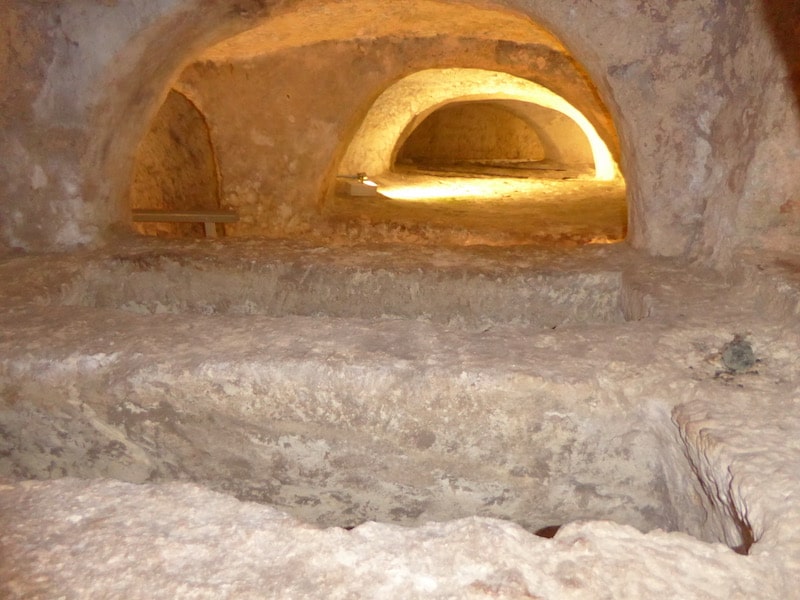

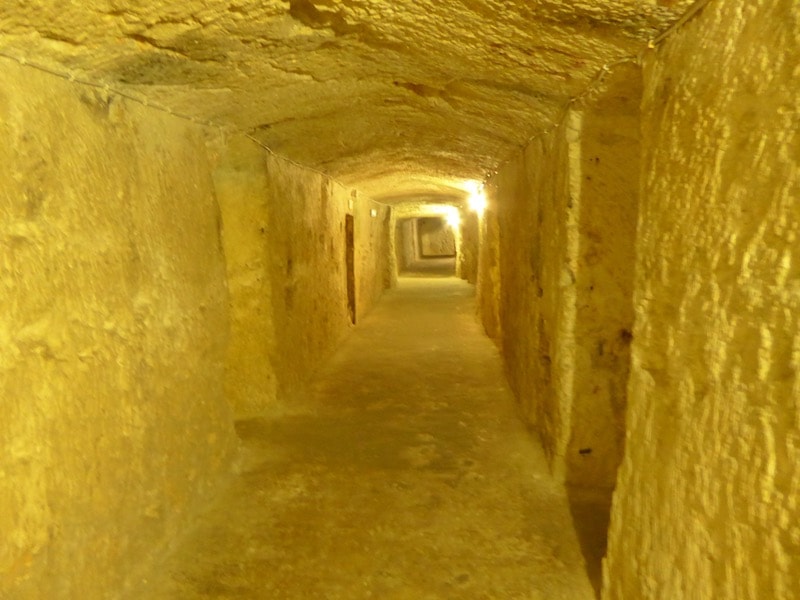

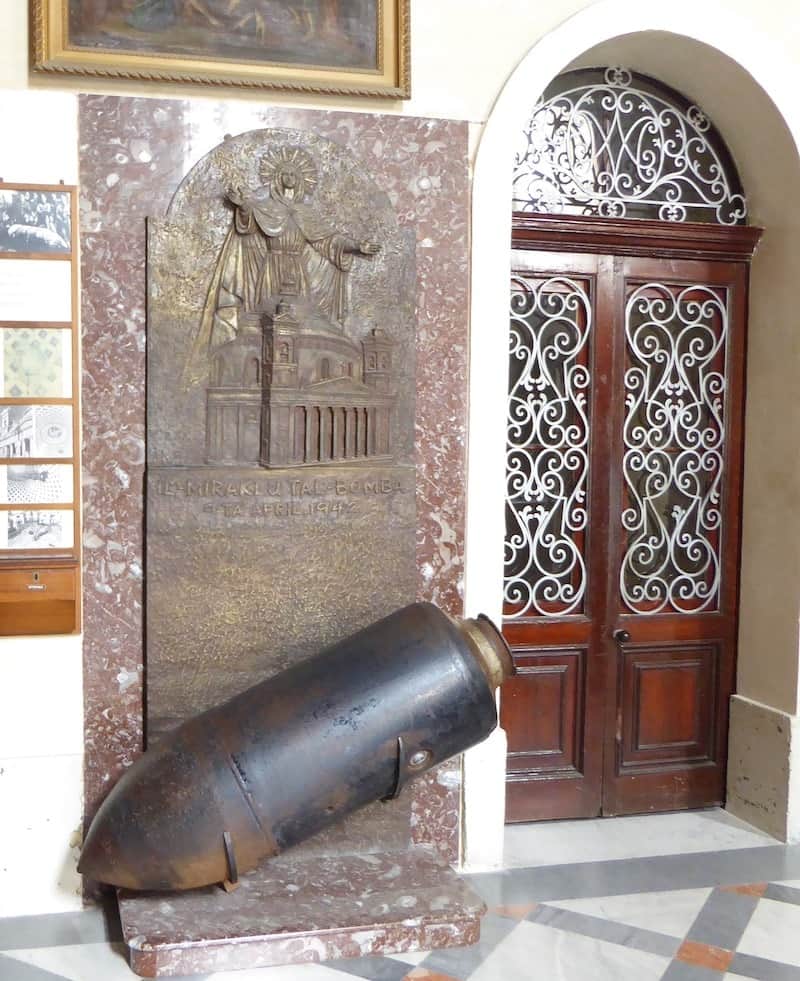
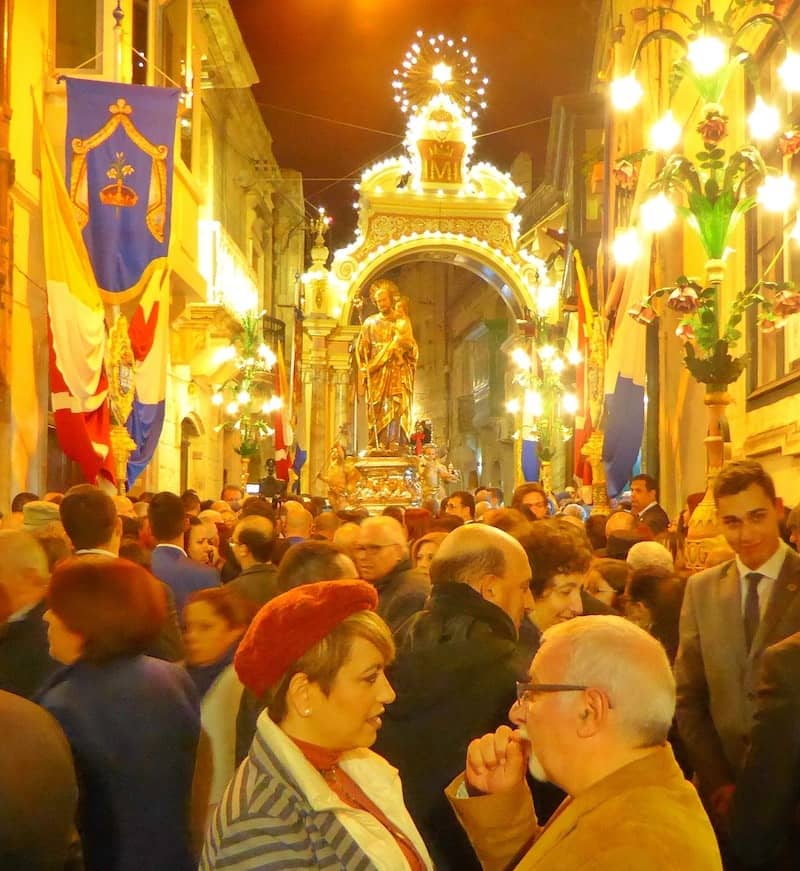
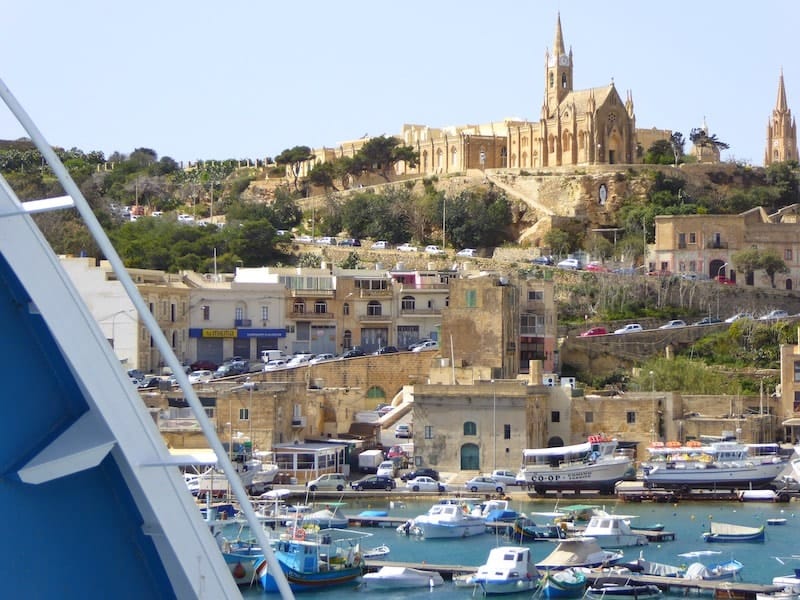
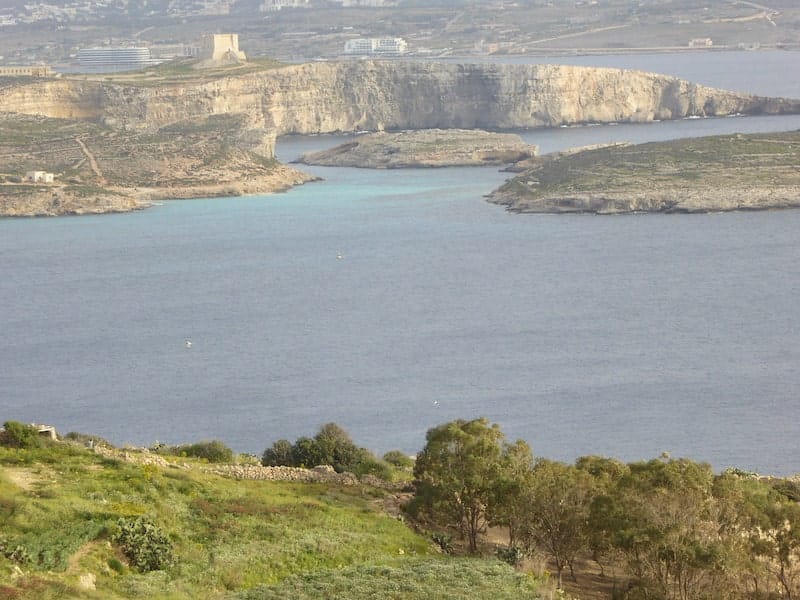
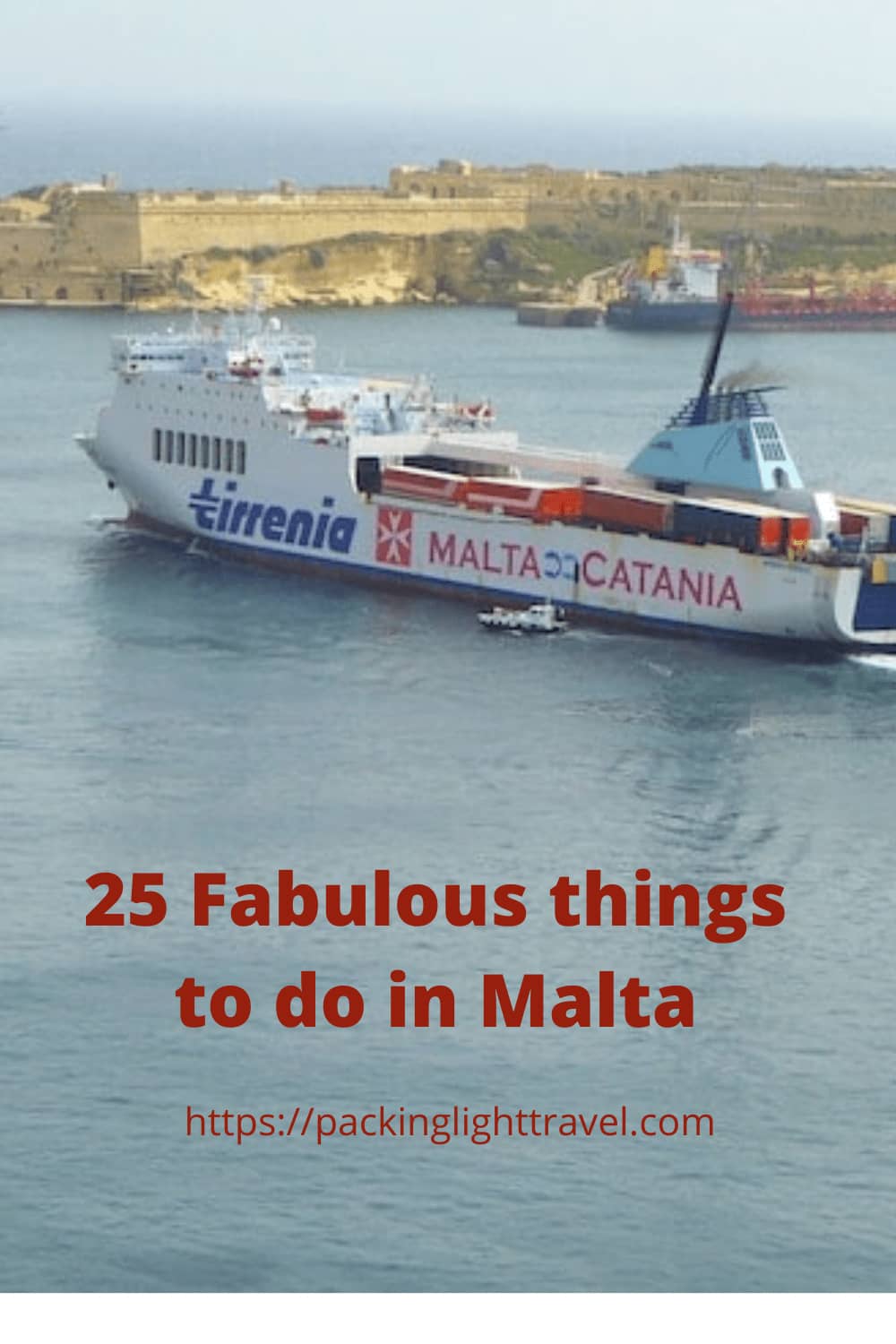




Lovely descriptions….wonderful condensation of information.
Have you, by any chance, been or see the Villa Guardamangia the bought by Lord Mountbatten and in which Queen Elizabeth and Prince Phillip lived while he was in the Navy? I understand that the Maltese government recently acquired it and I suspect it will be restored and turned into a tourist attraction. When Robert and I were in Malta, on a cruise, we did not get a chance to see it. It is on the outskirts of Valetta.
Thank you Charles. No, Villa Guardamangia wasn’t on my radar. I doubt access would have been possible. I’ve read that Queen Elizabeth was denied entry five years ago given its dilapidated state. Hopefully you’ll get in a visit once restoration has been completed.
Visited summer 2019. Two adults, a teen, two preteens, and a four year old. For such a large group (that includes impatient kids) the Maltese version of UBER was the best choice. The tiny main island, densely populated, takes forever to navigate. Thus, when travelling with six, even though we lost a bit on $, we gained much on time.
My fav ? Valetta is beautiful. And I loved the Hypogeum (ancient caves near Mdina). When on the Mediterranean ALWAYS take a dip in the ocean.
The entire island is a delight and super safe. We even stayed near the “party area” of St Julian’s w/o any complications whatsoever.
About Gozo I want to add that a visit to some churches is a must like for example the Gozo citadel or Ta` Pinu Shrine.Interesting also the festa which happen once a week in summer.The mostv popular is Santa Maria feast.
If one is interested to spend more than one day there are various apartments and farmhouses to choose from.